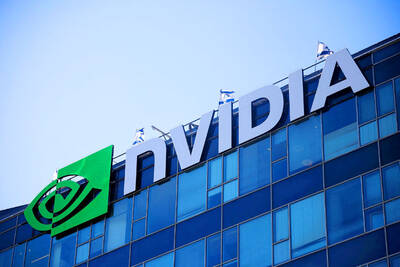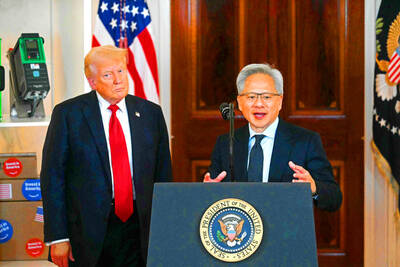Gold is back to a currency play, with prices surging only for British investors, as the pound posted the biggest drop in almost eight months.
Bullion priced in sterling on Friday rose as much as 2.2 percent to £1,007.52 per ounce, a seven-week high, after British Prime Minister Theresa May failed to win an overall majority.
In US dollar terms, gold futures fell, posting its first weekly loss in more than a month, as market attention for the rest of the world refocuses on the prospect of US interest rates rising next week.
The impact on the metal used as a hedge against political and economic uncertainties has been muted outside of the UK, even as May battles to survive amid calls for her resignation after a disastrous election that cost her party to lose its parliamentary majority just days before Brexit negotiations with the EU begin.
The US dollar rallied, while US Treasury yields rose, hurting gold’s appeal as an alternative investment.
“It seems like long liquidation on gold and it looks vulnerable to more setbacks,” Phil Streible, a senior market strategist at RJO Futures in Chicago, said in a telephone interview.
“Gold has been such a great trade and there was so much optimism, but it just failed to breach through US$1,300. People are now looking at interest rates, with bond yields rising,” Streible said.
Gold for August delivery on Friday fell about 0.6 percent to settle at US$1,268.80 an ounce on the Comex in New York, after slipping as much as 1 percent earlier. The contract is down 0.9 percent from last week’s US$1,280.20
Traders are pricing in a 96 percent chance that the US Federal Reserve might raise interest rates at its meeting next week, according to Fed fund futures data compiled by Bloomberg.
Some investors took advantage of higher prices for sterling-priced gold to sell positions, according to BullionVault, a London-based online trading platform.
“Traders were not as active as they were during the early hours of the Brexit referendum result,” BullionVault head of research Adrian Ash said in an e-mail.
“The political situation is anything but strong and stable,” said Jonathan Butler, a precious metals strategist at Mitsubishi Corp in London. “There is quite a bit of potential for support for gold, certainly in sterling and possibly also in [US] dollars, in the near term.”
PALLADIUM
In the main commodity markets, nothing is doing better than palladium this year.
The metal is up 30 percent, beating 33 other raw materials, including lean hogs and aluminum, tracked by Bloomberg.
On Friday, spot prices surged as much as 7.9 percent to a 16-year high of US$928.36 an ounce before settling at US$885.57 an ounce.
The metal gained 5.2 percent this week.
It is now almost as expensive as platinum for the first time since 2001, helped by Volkswagen AG’s emissions scandal two years ago that has prompted consumers to switch from diesel to gasoline cars.

Taiwan Semiconductor Manufacturing Co (TSMC, 台積電) last week recorded an increase in the number of shareholders to the highest in almost eight months, despite its share price falling 3.38 percent from the previous week, Taiwan Stock Exchange data released on Saturday showed. As of Friday, TSMC had 1.88 million shareholders, the most since the week of April 25 and an increase of 31,870 from the previous week, the data showed. The number of shareholders jumped despite a drop of NT$50 (US$1.59), or 3.38 percent, in TSMC’s share price from a week earlier to NT$1,430, as investors took profits from their earlier gains

AI TALENT: No financial details were released about the deal, in which top Groq executives, including its CEO, would join Nvidia to help advance the technology Nvidia Corp has agreed to a licensing deal with artificial intelligence (AI) start-up Groq, furthering its investments in companies connected to the AI boom and gaining the right to add a new type of technology to its products. The world’s largest publicly traded company has paid for the right to use Groq’s technology and is to integrate its chip design into future products. Some of the start-up’s executives are leaving to join Nvidia to help with that effort, the companies said. Groq would continue as an independent company with a new chief executive, it said on Wednesday in a post on its Web

CHINA RIVAL: The chips are positioned to compete with Nvidia’s Hopper and Blackwell products and would enable clusters connecting more than 100,000 chips Moore Threads Technology Co (摩爾線程) introduced a new generation of chips aimed at reducing artificial intelligence (AI) developers’ dependence on Nvidia Corp’s hardware, just weeks after pulling off one of the most successful Chinese initial public offerings (IPOs) in years. “These products will significantly enhance world-class computing speed and capabilities that all developers aspire to,” Moore Threads CEO Zhang Jianzhong (張建中), a former Nvidia executive, said on Saturday at a company event in Beijing. “We hope they can meet the needs of more developers in China so that you no longer need to wait for advanced foreign products.” Chinese chipmakers are in

POLICY REVERSAL: The decision to allow sales of Nvidia’s H200 chips to China came after years of tightening controls and has drawn objections among some Republicans US House Republicans are calling for arms-sale-style congressional oversight of artificial intelligence (AI) chip exports as US President Donald Trump’s administration moves to approve licenses for Nvidia Corp to ship its H200 processor to China. US Representative Brian Mast, the Republican chairman of the US House Committee on Foreign Affairs, which oversees export controls, on Friday introduced a bill dubbed the AI Overwatch Act that would require the US Congress to be notified of AI chips sales to adversaries. Any processors equal to or higher in capabilities than Nvidia’s H20 would be subject to oversight, the draft bill says. Lawmakers would have